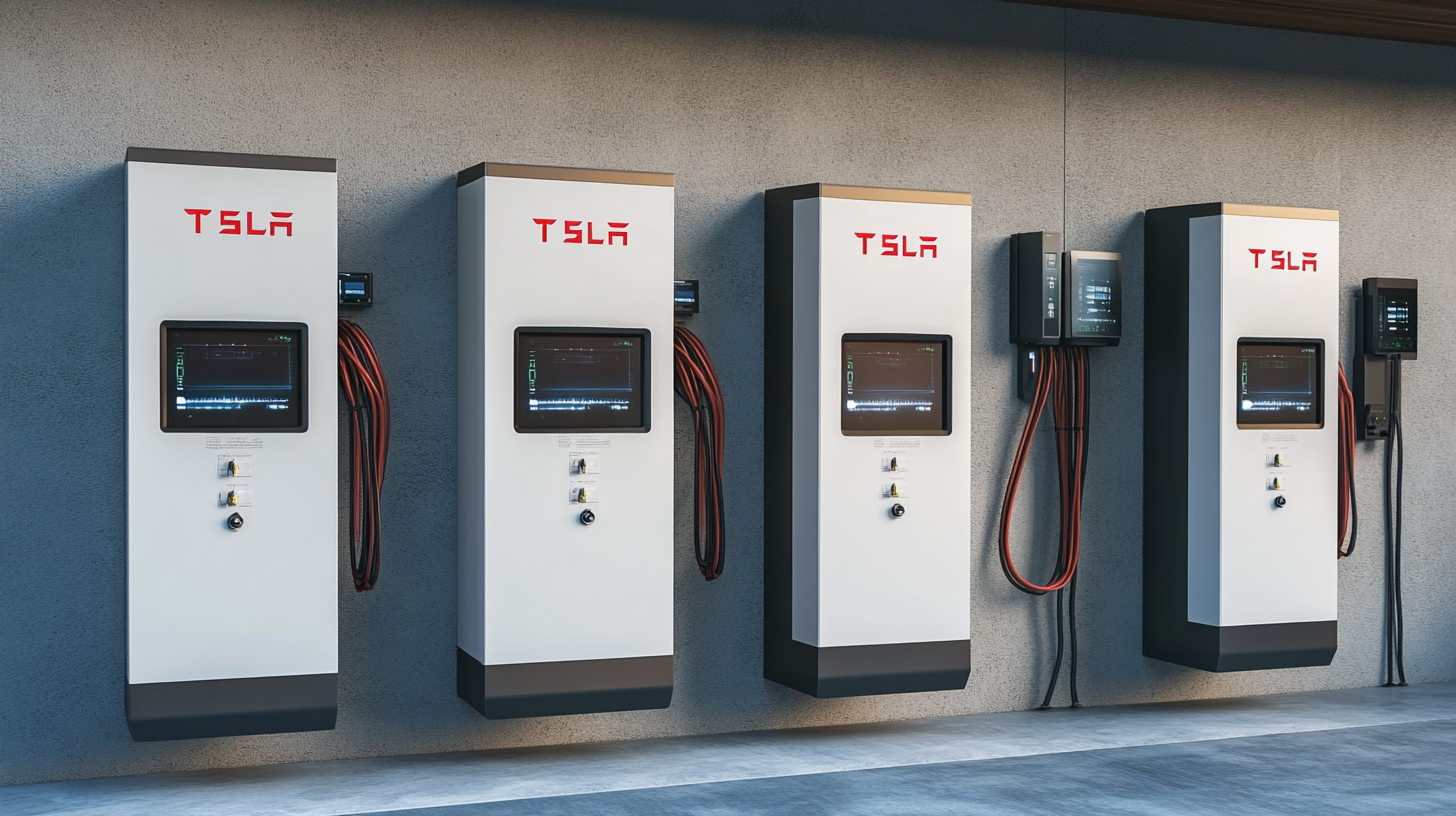Factory Tour
Exploring Innovative Alternatives to Wall Mounted Energy Storage Batteries
As the demand for renewable energy sources continues to rise, the need for efficient and innovative energy storage solutions becomes increasingly critical. Wall-Mounted Energy Storage Batteries have emerged as a popular choice for residential and commercial applications, offering the benefits of space efficiency and scalability. According to a report by MarketsandMarkets, the global energy storage market is projected to grow from USD 21.4 billion in 2020 to USD 38.4 billion by 2025, highlighting a compound annual growth rate (CAGR) of 12.6%. However, with advancements in energy technology and shifting consumer preferences, there is a growing interest in exploring alternative storage solutions that could complement or even replace traditional wall-mounted systems. This blog aims to delve into innovative alternatives to Wall-Mounted Energy Storage Batteries, assessing their applications across various industries and evaluating their potential to transform how we store energy.

Exploring Cutting-Edge Technologies in Energy Storage Solutions
The quest for effective energy storage solutions has led to groundbreaking innovations beyond traditional wall-mounted batteries. As the demand for sustainable energy sources grows, various cutting-edge technologies are emerging to enhance energy storage capabilities. From liquid metal batteries to iron-air systems, these alternatives promise not only improved efficiency but also longer life cycles and environmental sustainability.
When exploring these innovative options, consider the specific needs of your energy consumption. Liquid metal batteries are particularly intriguing for large-scale applications since they operate at high temperatures and can store vast amounts of energy. They have potential in grid applications, allowing for better management of renewable energy sources. If you're looking for something more compact, solid-state batteries use solid electrolytes to offer greater energy density and safety, making them suitable for residential use.
Tip: Always assess the scalability of the energy storage solution you choose. Some technologies may be ideal for individual applications but may not expand to larger systems without significant modifications. Moreover, keep an eye on the latest research and development in energy storage; being an early adopter of new technologies can lead to substantial long-term savings and efficiency gains.
Analyzing the Benefits of Portable Energy Storage Systems
The portable energy storage system market is on the rise, with projections indicating growth from $299.4 million in 2025 to $504.95 million by 2032, reflecting a compound annual growth rate of 8.04%. This surge is driven by increasing demand for versatile energy solutions that offer zero emissions and sustainability. A notable collaboration in this sector involves a luxury car manufacturer teaming up with a global energy leader to create a portable energy storage system designed for the circular use of electrified vehicle batteries.
As the market evolves, the 12V lithium battery segment is experiencing a pivotal moment. Made from lithium-ion or lithium polymer materials, these batteries provide low-voltage direct current power and cater to a variety of applications, particularly portable electronic devices. The increasing adoption of portable energy systems is further accelerated by advancements in battery testing equipment and emerging technologies that ensure safety and quality in battery manufacturing.
Tips for maximizing the potential of portable energy storage systems include regular maintenance and optimal usage practices to extend battery life. Users should also consider investing in advanced battery management systems to monitor performance efficiently. Exploring options such as solar-powered generators can complement portable energy resources, offering sustainable solutions for diverse energy needs.
Evaluating the Efficiency of Underground Energy Storage Options
As the demand for renewable energy sources continues to rise, so does the need for effective energy storage solutions. Among the innovative alternatives, underground energy storage (UES) options are gaining traction due to their potential efficiency and capacity. Unlike conventional wall-mounted batteries, UES systems can utilize natural geological formations, such as deep saline aquifers, for large-scale hydrogen storage. Recent studies indicate that these underground structures not only provide an immense storage capacity for hydrogen but also play a critical role in enhancing the reliability of energy systems powered by variable renewable resources.
The efficiency of these underground systems is underscored by ongoing research into their feasibility. For instance, the Nugget Sandstone in Wyoming has become a focal point for evaluating the effectiveness of underground hydrogen storage. Such evaluations are essential in establishing UES as a viable alternative to traditional energy storage methods. Furthermore, the integration of reservoir thermal energy storage showcases another promising avenue, particularly as it complements intermittent energy sources like solar and wind power. This holistic approach to energy storage is critical as we work towards a more sustainable future, emphasizing the need for adaptable solutions that maximize the use of renewable energies while maintaining grid stability.

Comparing Lithium-Ion Alternatives for Sustainable Energy Storage
As the demand for sustainable energy solutions continues to rise, there is an increasing interest in alternatives to traditional lithium-ion batteries for energy storage. While lithium-ion technology has dominated the market due to its high energy density and efficiency, concerns over resource scarcity, recycling challenges, and environmental impact have prompted researchers and companies to explore innovative alternatives. One promising option is sodium-ion batteries, which leverage more abundant materials and exhibit similar energy capabilities, offering a sustainable and potentially cost-effective solution for large-scale energy storage.
Another noteworthy alternative is flow batteries, which utilize liquid electrolytes to store energy. This technology provides the advantage of scalability, making it suitable for various applications from residential setups to grid-level storage. Additionally, flow batteries have longer cycle life and can be easily recharged, addressing some of the longevity issues associated with lithium-ion systems. By comparing these alternatives, it's clear that the future of energy storage may lie not solely in improving existing technologies, but in embracing a diverse range of solutions that align better with sustainability goals.

Innovative Applications of Thermal Energy Storage in Residential Settings
In recent years, residential energy consumption patterns have increasingly turned towards innovative energy storage solutions, particularly thermal energy storage (TES). This technology offers a promising alternative to conventional electrical energy storage by harnessing heat energy generated during off-peak hours. For instance, homeowners can utilize excess heat from solar water heaters or heat pumps, storing it in materials like water or specialized phase change materials. This stored thermal energy can then be used for space heating, domestic hot water, or even cooling during peak demand hours, effectively reducing both energy costs and reliance on grid electricity.
Moreover, thermal energy storage not only enhances energy efficiency but can also improve home comfort. By integrating TES systems with smart home technologies, homeowners can strategically manage their heating and cooling needs. For example, a thermal battery can release stored heat during the night when temperatures drop, maintaining a comfortable indoor environment while conserving energy. Such innovative applications are paving the way for a more sustainable and cost-effective approach to residential energy management, proving that thermal energy storage holds significant potential in the quest for energy-efficient homes.






